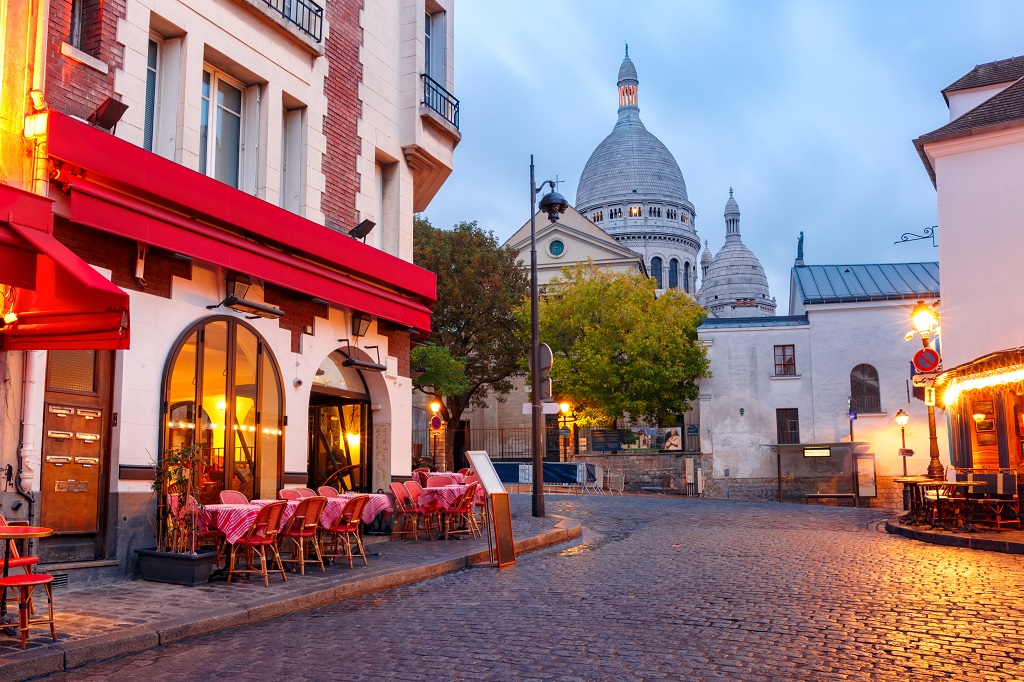Perhaps the most culturally compelling country in all of Europe, France brings together natural beauty, culture, and some of the most notable museums and art attractions in the world. Louis XIV wished to create a “place (Paris) dedicated to leisure” and we believe his dreams have been fulfilled! We feel Paris is the most romantic and aesthetically pleasing city on the planet. Its overall cultural-artistic environment is magical. The quality of Paris museums is unmatched: The Louvre, The Palace of Versailles, Orsay, the Basilica Cathedral of Saint-Denis, and more.
We think Owen Wilson’s character in the Woody Allen film, Midnight in Paris, gives a perfect summation of Paris:
“How’s anyone ever going to come up with a book or a painting or a symphony or a sculpture that can compete with a great city [Paris]? You can’t. When you look around, every street, every boulevard is its own special art form.”
17th Arrondissement

Montmartre
This district is forever associated with the Bohemian lifestyles of the late 19th and early 20th-centuries and the many famous artists who worked and lived here. In the early 20th-century, Montmartre still had the air of a rustic village, with painters setting up their easels outdoors, along the sloping cobblestone roads. A 19-year-old Picasso made his way here from Spain, while a 30-year-old Matisse lived on the edge of Montmartre with his wife and young daughter. Parisians call it the ‘Butte’ (knoll), as it is the highest point in the city. We feel Montmartre’s most charming feature is its winding back streets and small squares and terraces. Many artists paint quick-fire portraits in the Place du Tertre. Sacré-Cœur Basilica offers spectacular views over the city.
The oldest house in Montmartre, where Renoir once lived and worked, is now the Museé Montmartre. We feel its Renoir Gardens create a peaceful oasis from the massive tourist crowds found in overly popular public areas. Also, a big plus is the Féte Montmartre that takes place here every summer in the afternoon. This is a fun family stopover, including live music, Can Can shows, magicians, and fortune-tellers!
Other famous landmarks of Montmartre include the Moulin Rouge, a 19th-century windmill transformed into a world-famous cabaret and immortalized by the painter Toulouse-Lautrec; the Place des Abbesses, a picturesque square which is now a hub of the fashion world; and the Dalí Centre, a unique exhibition entirely devoted to the master of surrealism, and more particularly to his sculptures and engravings.
Nestled on the Butte Montmartre is Paris’ only remaining working vineyard, surviving from the Middle Ages. Back then, this hill was covered in grapevines. It is believed that the first vines were planted by Adelaide de Savoie, neice of Pope Callixtus II, in the first part of the 12th-century. The Montmartre Abbey, which became one of the wealthiest in Europe, continued cultivating the grapevines and making wine for profit.
Our Family’s Special Sunset Spot
The steps of Sacré-Cœur Basilica atop Montmartre, is an amazing sunset spot and rendezvous of many Parisians, where street lamps add to the surreal colors as the sky grows dark.
Chez Georges
This is possibly the most stellar of the many old-school bistros in Paris.
For more Paris Arrondissement information, see our other blog posts: